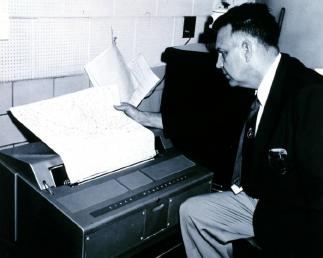|
Printer Queue
Description  The only printer in the computer science students' union is experiencing an extremely heavy workload. Sometimes there are a hundred jobs in the printer queue and you may have to wait for hours to get a single page of output. The only printer in the computer science students' union is experiencing an extremely heavy workload. Sometimes there are a hundred jobs in the printer queue and you may have to wait for hours to get a single page of output. Because some jobs are more important than others, the Hacker General has invented and implemented a simple priority system for the print job queue. Now, each job is assigned a priority between 1 and 9 (with 9 being the highest priority, and 1 being the lowest), and the printer operates as follows.
Your problem with the new policy is that it has become quite tricky to determine when your print job will actually be completed. You decide to write a program to figure this out. The program will be given the current queue (as a list of priorities) as well as the position of your job in the queue, and must then calculate how long it will take until your job is printed, assuming that no additional jobs will be added to the queue. To simplifymatters, we assume that printing a job always takes exactly one minute, and that adding and removing jobs from the queue is instantaneous. Input One line with a positive integer: the number of test cases (at most 100). Then for each test case:
Output For each test case, print one line with a single integer; the number of minutes until your job is completely printed, assuming that no additional print jobs will arrive.
Sample Input 3 1 0 5 4 2 1 2 3 4 6 0 1 1 9 1 1 1 Sample Output 1 2 5 Source 这个题用来练一练队列的操作还是不错的,开始一直不好怎么标记,用个结构体就好解决了。
|
#include<stdio.h> #include<queue> #include<algorithm> #include<string.h> using namespace std; struct node { bool vis; int pos; }p[2000]; bool cmp(int a,int b) { return a>b; } int main() { int t,n,m,i,j,k,a[2000],ans; scanf("%d",&t); while(t--) { memset(a,0,sizeof(a)); memset(p,0,sizeof(p)); scanf("%d %d",&n,&m); queue<node>q; p[m].vis=1;//目标任务,标记为1,其他的为0 for(i=0;i<n;i++) { scanf("%d",&a[i]); p[i].pos=a[i]; q.push(p[i]);//入列 } sort(a,a+n,cmp);//排下序,那个级别高的得先出队列 k=0; ans=1;//记录那个所需时间 while(!q.empty()) { node temp=q.front(); q.pop(); if(temp.pos==a[k]&&!temp.vis)//级别高的先出队列,时间加1,最大值改变 { ans++; k++; } else if(temp.pos==a[k]&&temp.vis)//轮到目标任务,跳出 { break; } else q.push(temp);//如果该队列中有比当前任务级别高的任务,那么该任务就得加到队尾去 } printf("%d ",ans); } return 0; }